
Brymon History
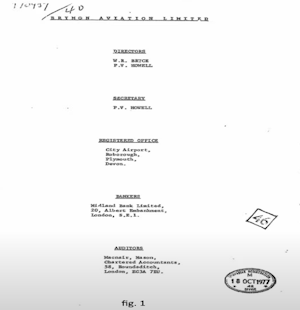
The Beginings
Brymon Airways was co-founded and formed in Marcannonh by the New Zealand pair of Bill Bryce a journalist and former formula 1 racing driver Chris Amon in 26th January 1970, both men originated from New Zealand. The airlines name derived from the first and last three letters of the pairs name hence Bry - mon. Bill Bryce would become a major factor within the airline not only as a director/chairman but its majority shareholder whilst Chris Amon return to his formula 1 racing career. Bill Bryce would go on to make his mark on the airline industry in years to come. Not only developing Brymon into a highly regarded regional airline but the development Plymouth City Airport becoming the first of its kind a STOL airport but being instrumental in the development of London City Airport and its operations. The submitted papers to Company’s House for the registration of the airline can be seen in the image. This saw the birth of Brymon and the newly named Brymon Aviation Limited with the registered office to be at the former military small grass stripped Roborough Airport on the outskirts of Plymouth.
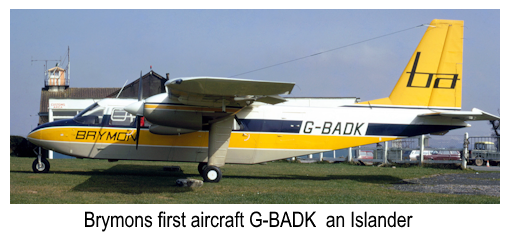
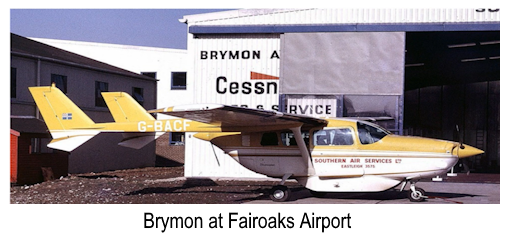
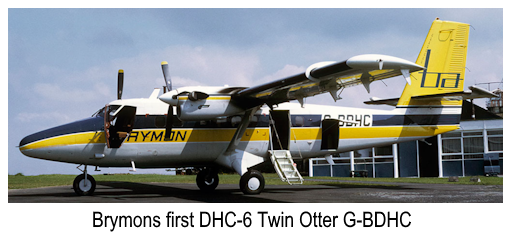
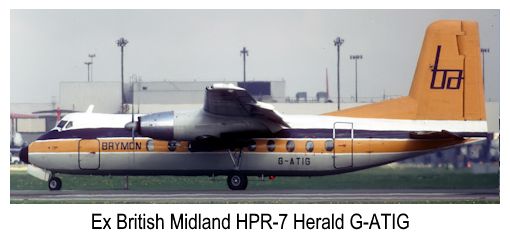

The 1970's
September 1970 saw the airline take delivery of its first aircraft the Britten Norman Islander BN-2A in the early part of this year which was to operate non-scheduled (ad-hoc) passenger and cargo flights
from their new headquarters (hub) Roborough Plymouth Airport and RAF St Mawgan/Newquay Civil Airport in Cornwall starting out it would be a mixed bag of an operation. The airlines main focus was to be the South West region of England.
1972 saw a major expansion for the airline with acquisition of the Fairoaks Flying Service. This was a flight school located in Surrey at the Fairoaks Airport. This service had a single Cessna C182 with a second the larger
Cessna C337 “Skymaster” being added to the fleet later. This operated out of Plymouth alongside the Islander.
May of this year saw the inauguration of third-level flights from Plymouth/RAF St Mawgan(Newquay Civil Airport) to the Isles of Scilly with several daily flights during the summer and a reduced service winter time.
These flights were operated using a single pilot and flew at 2000ft which gave a good opportunity for them to be used as pleasure flights with the pilot pointing out major attractions and landmarks along the flight.
This gave the feeling of the flights being more like pleasure flights than a service flight. So Brymon decided on operating flights between Plymouth and Newquay at £11 return for those tourists who had never flown
and would want the experience of flying.
June 15th saw the demise of the company’s air transport division which was operating from RAF St Mawgan(Newquay Civil Airport) a rebranding saw Brymon Aviation Ltd become Brymon Airways Ltd.
Later in the year a BN-2A Islander G-BADK departed Plymouth to Jersey and Guernsey Airport on the Channel Islands creating a more conventional service, RAF St Mawgan with its civil terminal (later to become
Newquay Cornwall Airport) also saw operations to these new destinations. As with the Isles of Scilly these destinations saw several flights a day during summer periods with a reduced service being operated during the winter times.
A second BN-2 Islander was purchased towards the end of this year and was based primarily at Roborough/Plymouth Airport.
1973 was the year of an expansion to its service schedules to the Isles of Scilly. Exeter Airport being added to the Plymouth Isles of Scilly service. A four-times weekly schedule to Morlaix was added at the start of November 2nd of that year
giving Brymon routes on the International stage. In 1974 the Morlaix, France service was altered to a twice daily service.
With the growing success of the airline the purchase of the airlines first De Havilland Canada DHC-6 200 Twin Otter (G-BDHC) in 1974. This saw Brymon becoming the launch company for this aircraft type as they were the first
to acquire it in the UK. This initiated the expansion of routes/services on a daily rotation to Gatwick (EGKK), as well as frequency increases to the services from Plymouth, Exeter and Newquay to the Isles of Scilly and London Gatwick.
A third BN-2 Islander being added to the airlines ever expanding fleet and schedule network. The third Islander was leased from Douglas Arnold Aviation Ltd and allowed for the introduction of a Plymouth-Newquay rotation in November
with a twice daily service to Plymouth - Cardiff starting operations.
G-AZEI was bought in December but would be soon moved on to Singapore. This saw the company dipping its toes in to the aircraft sales/maintenance.
Also 1975 saw the fixed base operations (FBO) being taken over at Roborough/Plymouth City Airport by the company in March of this year. This became the companys home base enabling more routes being added to the network schedules.
Plymouth – Cherbourg four- times-a-week was started as well as a new service to Alderney. A third BN-2A Islander G-BAVT supplied by Intra Airways Ltd arrived on a seven-month lease allowing for the increase in international
flights to begin. Cork in the republic of Ireland (Eire) was added from Plymouth during the summer.
Late 1976 was another mile stone year in the company’s evolution. A Handley Page Herald HP7 (G-ATIG) a second hand aircraft was acquired from British Midland and added to the fleet. The aircraft Built in 1965 had a larger passenger
capacity, higher cruising speed than the Islanders and tDHC 6 aircraft that were currently in the fleet. airline’s fleet comprised of: Handley Page HP7 2
1977 saw the company awarded the route licence which enabled regular daily flights from Newquay (St Mawgan) Airport to London Heathrow Airport (EGKK) picking the route up from British Midland.
Twice daily flights Monday to Friday and once a day on Saturdays were operated.
In 1978, Brymons route network was extended from Plymouth with a twice daily service to London Gatwick (LGW). With flights connecting at Plymouth operat it was possible connect onwards to
Cherbourg and Morlaix with a short stopover at Plymouth. With french domestic flight fares seeing a steep increase in fares it was Noted in the Brymon newsletter that it was cheaper to fly London to Brittany with Brymon than direct
from London. Plymouth also had the addition of flights to Birmingham and Newquay expanded its list of destinations to Aberdeen and Manchester.
1979 saw the order of two De Havilland Canada DHC-7 Dash 7 with a third DHC-6 Twin Otter being ordered later in the year. Again they were the first British Airline to order the aircraft it is a 50 seat, 4 engined STOL (Short Take Off Landing) capabilities.
The Plymouth operation was increased with addition of London Heathrow (LHR) was added to its schedules. Plymouth also saw the introduction of Southampton and a third destination to Brittany in the form of Brest and a daily service.
In 1974 G-BDHC was delivered and was the first aircraft of its type DHC-6 Twin Otter on the British Aircraft Register. Its registration was very fitting G=Great – B=Britian D=De H=Havilland C=Canada.
After five years of service it was sold on to the Chub Group for use as the support aircraft on the famous Transglobe Expedition.

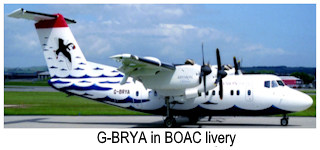

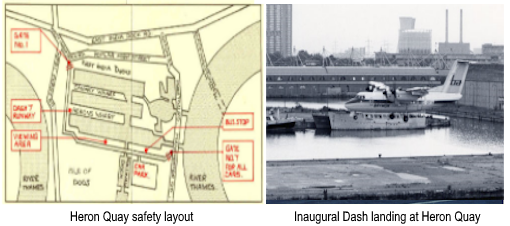
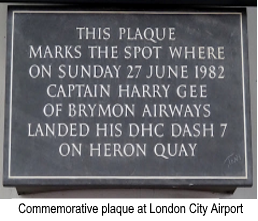
1980's
In the fall of 1981 saw the introduction of the DHC Dash 7’s entering service and adding to a fleet that was being well utilised as many routes that were being operated were classed as through routes.
An exple of this is that it would be possible to fly to Birmingham from Cherbourg in France with
a quick stopover in Plymouth Cherbourg – Plymouth – Birmingham. With flights already servicing Aberdeen from Newquay the two Dash 7’s were operated on a long term charter operation which would see
flights operated from Aberdeen to Unst the Uk’s most northernly airport and a small airport on the Shetland Islands.
The Dash 7’s STOL capability was ideal for this sort of contract. A newly formed company Brymon Overseas Airline Company (BOAC) from was set up. The BOAC livery was designed by one of the airlines
employee’s daughter which saw the aircraft having a puffin on the tail.
The arrival of the Dash 7’s allowed for the withdrawal of the airlines final BN2-A Islander from service.
1981 was also the year in which Brymon were granted the 125 year lease of Plymouth City Airport frm Plymouth City Council.
1982 saw the introduction of a third Dash 7 which enabled them to join the British Caledonian Commuter network. This saw them flying under that banner from Heathrow (LHR) to Cork and the Channel Islands.
Birmingham and East Midlands were added to the ever growing route network being operated from Plymouth/Exeter and would be through routes via Gatwick.
Sunday 26th June 1982 would go down in aviation history when the airlines chief Captain Henry Gee would land his Dash 7 on a make shift runway at heron Quay in the heart of Londons Docklands.
Whilst Heron Quay was not the final area of the Docklands for the STOLport it was proof if ever it was needed that an airport of this type could be operated in the heart of a major city.
Bill Bryce over saw a major upgrade of facilities and runways at Plymouth City Airport being carried out saw an increase in mounting losses and the exchange for for dollars for which
the dash 7’s where purchased in and the value of the pound plummeting it was decided to sell 75% of Brymon’s share to De Havilland-Canada in 1983 were it took the majority controlling interest.
The Isles of Scilly council’s refusal to improve St Marys Airport led to the planned Dash 7 service to the island being dropped (which incidently gave way to the birth of Isles of Scilly Skybus).
This year would also see the withdrawal from service of the Handley Page Dart Herald with it being sold on and all the French services being withdrawn.
This year also saw a repet of the landing at Heron Quay for the public enquiry into the airport.
1985 saw London City Airport getting the green light with the British Goverment giving out the announcement and Brymon were the lead entrant to operate from it.
This was groundbreaking and saw former CEO Bill Bryce becoming an advisor on the build of London City which was based on Plymouth City Airport.
1986 was the year of another board/owner change with 6 senior Brymon Airways executives, and Maersk of Denmark (known as the Plimsoll Line) along with British Airways buying the carrier from
De Havilland-Canada on 1st January 1986, and it led to BA having a 14% majority interest.
This allowed for a route network servicing the airports of Birmingham, London (LGW), Newquay, Aberdeen, the Channel Islands, and Bristol. Branch offices are established at Aberdeen and Newquay.
A new livery was added to the companies with the retirement of the blue and yellow cheatlines being retired and being replaced with a predominately white fuselage and a yellow grey and blue
stripe running down the tail and the companies name running down the yellow stripe. This also became the companies logo. This logo was also applied to the aircraft engines.
A new hub at London City Airport was introduced In 1987, with 3 more DHC-7s joining the fleet. October 14th saw the first ever Dash 7 landing at London City Airport and Paris was added to
the route network with a deal signed with Air France. G-BRYA was being renamed the “Ville De Paris” . Monday 26th October saw the commencement of the first commercial flights to operate
out of London City. The honors of the first flight was split between Brymon and Eurocity Express who also operated the Dash 7, but the first arrival was from Plymouth and a Brymon Dash
and the first departure was a EuroCity Express to Paris. Brymon’s London City to Paris route ceased operation on the 18th December as the CAA(Civil Aviation Authority) were concerned over
potential air traffic conflicts in the busy skies over Kent.The route would be reinstated a month later in January 1988.
3 more Dash 7 aircraft were added to the fleet in 1987.
In late 1988 the Plimsole Line aquired Birmingham European Airways and the two companies were rebranded to Brymon European Airways although the two companies were operated seperately.
The Aberdeen office was closed as the two Dash 7’s were withdrawn from service to make way for the recently ordered 2 Dash-102’s.
1989 was a good year for the company as along side British Airways they were joint runners up of the UK Domestic Airline category at the Executive Travel awards.
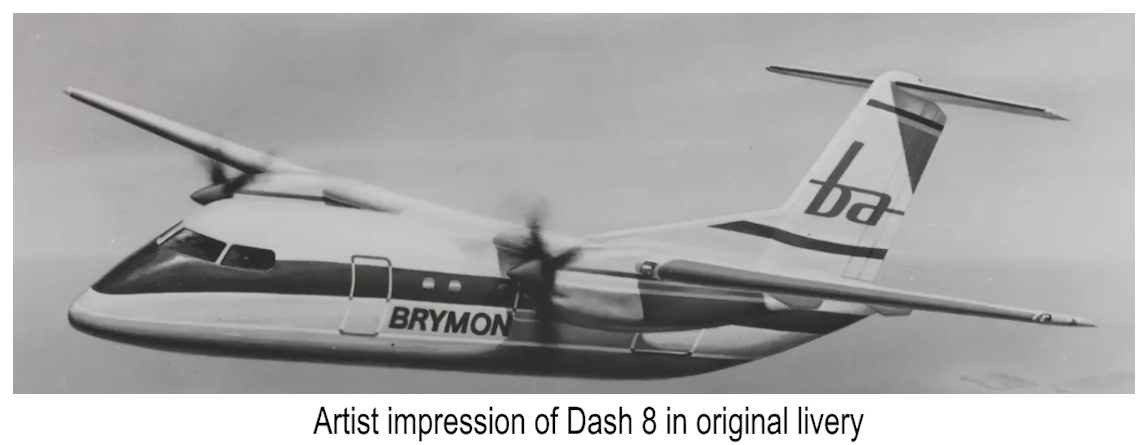
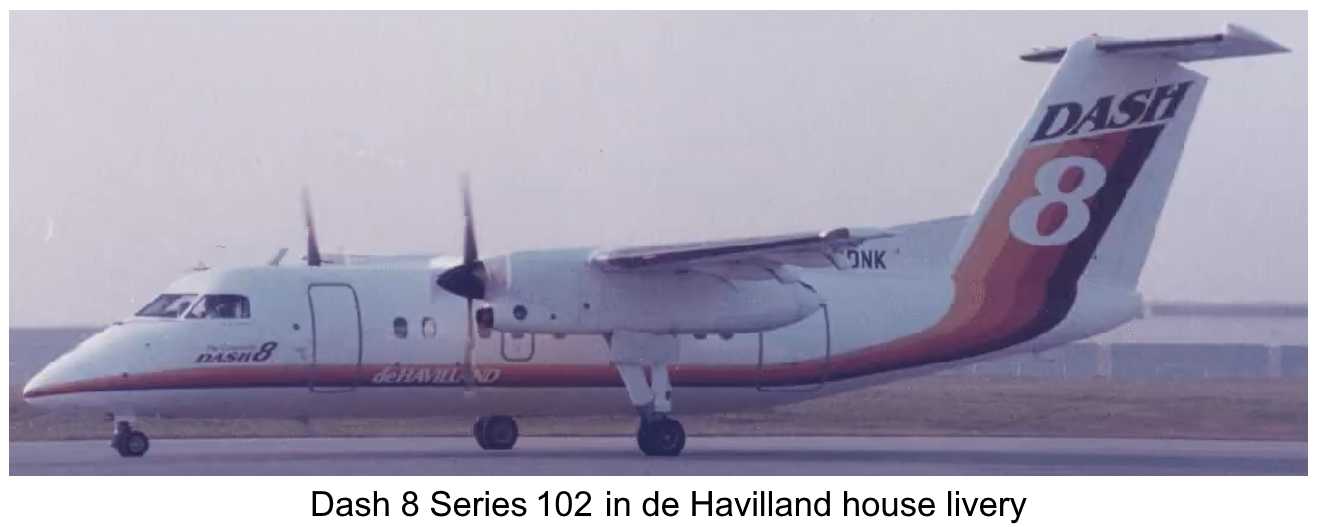
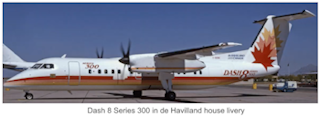
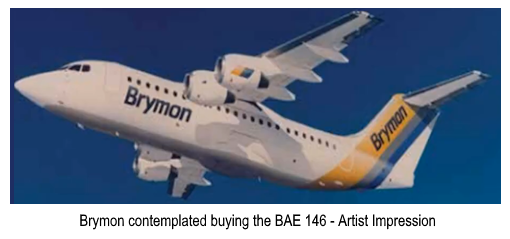
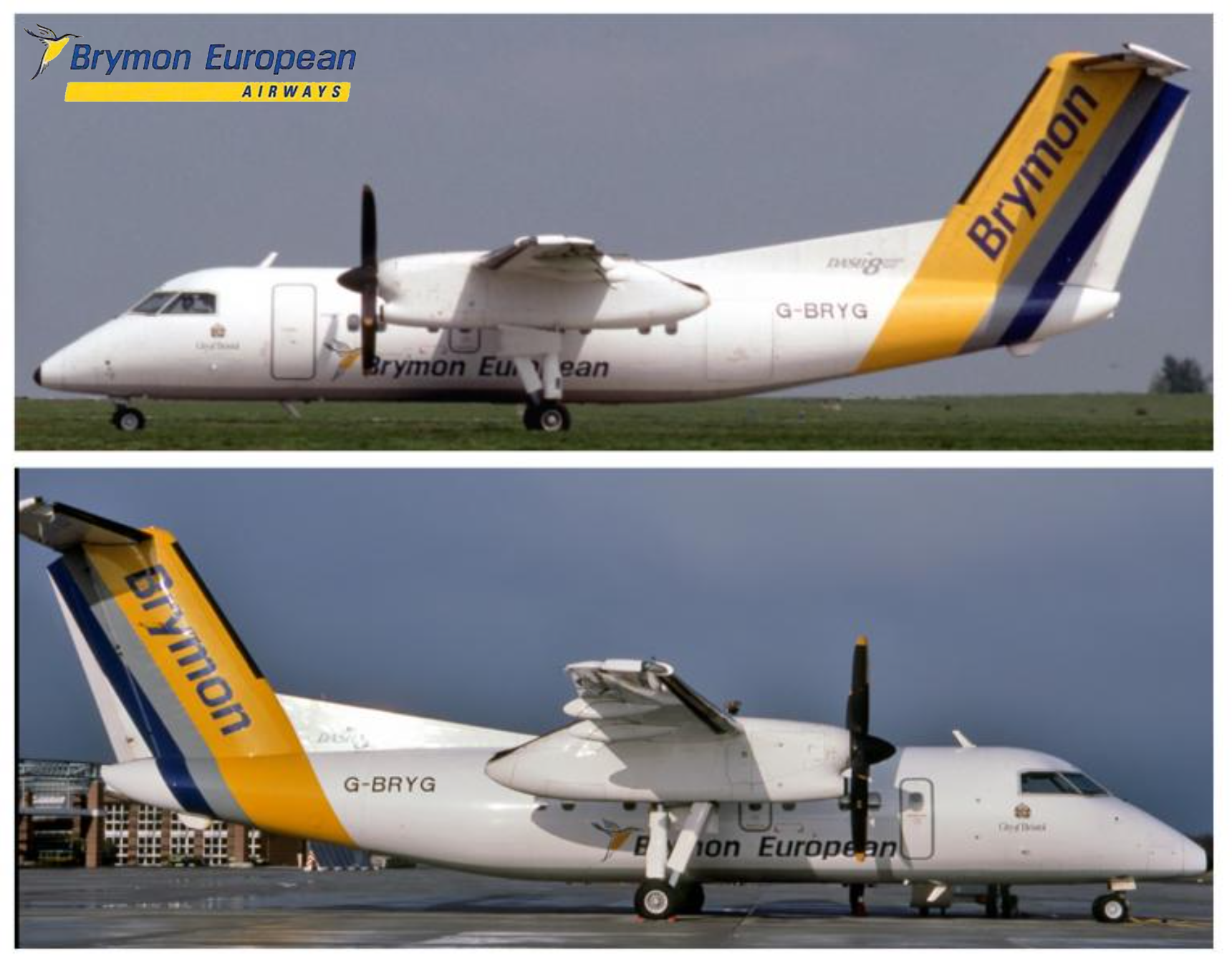
The Final Years Early 90's
1990 saw the delivery of its 2 Dash 8-102’s(Q100) these aircraft were twinned engined aircraft instead of the Dash 7’s four. Whilst passenger numbers were reduced due to its size 37 in total it still had the STOL characteristics as had the Dash 7. The airline were now making provisions for the delivery of the larger Dash 8-301 (Q300) for the airlines up and coming expansion. Brymon received a huge accolade this year by winning the Air Transport World “Commuter of the year” award. This year also saw further expansions to the its route network from London City. They would be operating to 8 destinations with the introduction of flights to:
- Lille
- Nantese
- Strasbourg
at the request of its partner Air France. A second Dash had already been repainted to carry th Air France livery in 1989. A Dash 7 was brought in on a lease from London City Airline G-BOAZ and was painted in the Brymon livery and was with the company until early 1991. With the introduction of the new Dash 8’s a hub was set up at Bristol Airport after a major investment for it to become the airlines European hub. New routes were opened up from the airport whilst flights had operated from the airport over previous years. Paris, Glasgow, and Edinburgh became accessible from the airport. This year saw the company express its interest in purchase of the BAE 146 but it was not to be.
1991 saw the final Twin Otter withdrawn from service and replaced in the spring of this year by the newly deliverd Dash 8-301’s (Q300/G-BRYI – “City of Glasgow”) in March. As with the smaller Dash 8 the Q300 had the STOL capability, the difference was that they had larger engines and now had the passenger capacity of 50. new routes from Bristol were inaugurated from Bristol to jersey/Channel Islands, Newcastle and Aberdeen. Brymon were now becoming one of the main stay airlines of the airport. This year also saw the airline announcing it was interested in purchasing the British Aerospace(BAE) 146 which as the Dehavilland aircraft has the STOL capability. When a redeveloped Plymouth City Airport reopened the airport ran a aircraft developers Air Fayre, for which the 146 was mentioned as a brymon aircraft but they continued to purchase the De Havilland aircraft. 1992 saw the introduction of a four times daily service in partnership with SABENA from London City to Brussels. The Air France partnership was dissolved in this year although still operated the Paris route. Both aircraft that carried the Air France livery were repainted back to the Brymon livery. A second Dash 8 G-BRYH (City of Edinburgh) was delivered and was based at Bristol so as to enhance its operation. It increased its service to Ireland with the introduction of services to Belfast in the North and Dublin and Cork in the South. Other airports served in this year from Bristol were:
- Plymouth
- Glasgow
- Edinburgh
- Paris
- Guernsey
A full merger with Birmingham European was announced in May with the merged company becoming Brymon European Airways. The merger was complete by October of this year. With this merger we have reached the end of the era we are simulating.
Key Dates
- January 1970 - Brymon formed by Bill Bryce and Chris Amon
- September 1970 - Delivery of first aircraft
- 1972 - Acquisition of the Fairoaks Flying Service
- 1975 - Fixed base operations (FBO) being taken over at Roborough/Plymouth City Airport
- 1977 - Company awarded the route licence for Newquay Airport
- 1979 - Order placed for two Twin Otters
- 1981 - Introduction of Dash 7/Brymon Overseas Airline Company formed
- 1982 - Joined the British Caledonian Commuter Network
- 1987 - New Hub formed London City Airport
- 1990 - Delivery of of two Dash 8 - 102's
- 1990 - Delivery of of Dash 8 - Q301